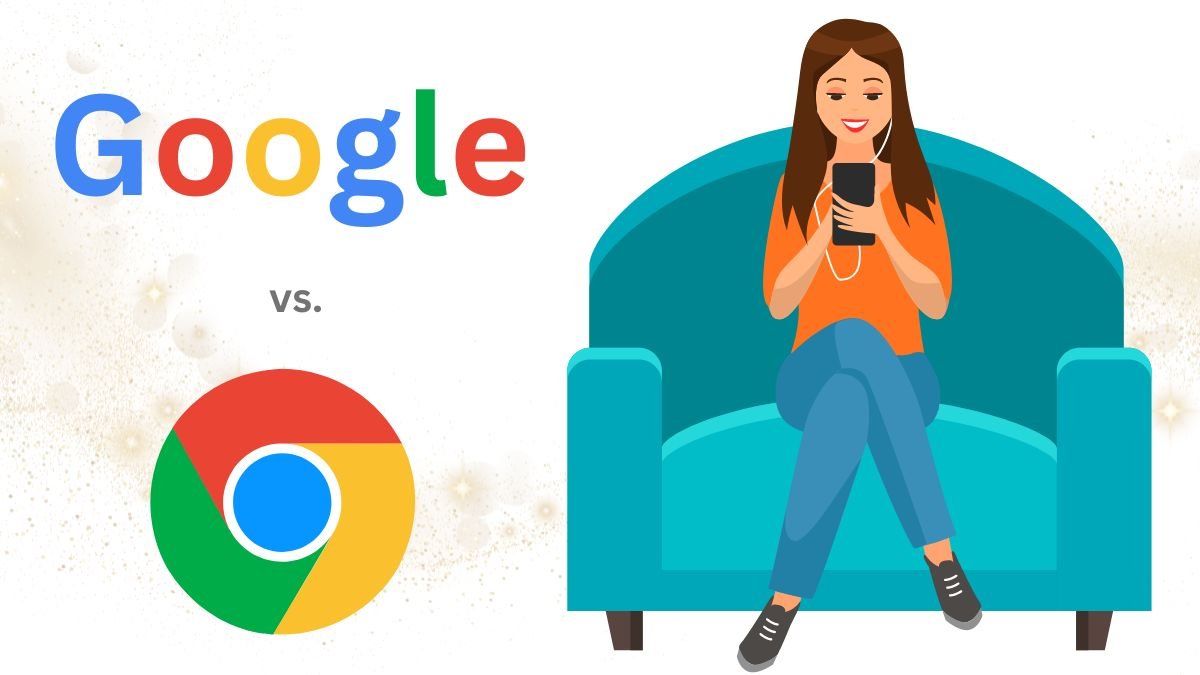Ever typed “Google Chrome” into Google Search? You’re not alone!
Many people get confused about the relationship between Google and Google Chrome. While their names are similar, they serve distinct purposes in the vast digital landscape. This guide clarifies the key differences between these tech titans.
Google is a multinational technology company that offers a vast array of products and services, whereas Google Chrome is a specific web browser developed by Google to help users navigate the internet.
Understanding Google
Founded in 1998, Google has become a household name synonymous with the internet itself.
According to Google about Google: https://about.google/, the company’s core mission is “to organize the world’s information and make it universally accessible and useful.”
Imagine a giant library containing information on every conceivable topic. Google doesn’t physically store all this information itself but rather acts as a sophisticated librarian, indexing and cataloging the information available on countless websites.
Through its search engine, Google helps users find exactly what they’re looking for by understanding the intent behind their search queries and providing the most relevant results.
Here’s a glimpse into the diverse range of products offered by Google, each playing a role in its mission of information organization and accessibility:
- Search Engine: Undoubtedly the most recognized product, the Google Search engine allows users to find information on the internet through keywords and phrases. Think of it as the library’s card catalog, helping you locate the specific books (websites) containing the information you need.
- Gmail: A free email service with a user-friendly interface and ample storage space. Gmail helps manage and organize information flow through electronic messages.
- Google Drive: Cloud storage for documents, photos, and other files, accessible from any device. This acts like your own personal digital filing cabinet, accessible from anywhere.
- Google Maps: A comprehensive online mapping service with street views, traffic updates, and point-of-interest information. Google Maps helps users navigate the physical world just like you might use a map to find your way around a new city.
- Google Docs & Sheets: Free online word processing and spreadsheet applications, enabling collaborative editing in real-time. These tools allow you to create and share information documents easily.
- Android: A widely used mobile operating system powering billions of smartphones and tablets worldwide. Android provides the underlying software platform for many mobile devices, making information and other Google products readily accessible on the go.
- YouTube: A video-sharing platform where users can upload, watch, and share videos across various categories. YouTube serves as a vast digital library of video information and entertainment content.
Delving into Google Chrome
Google Chrome, developed by Google, made its debut in 2008 as a web browser. Think of it as your personal vehicle for navigating the vast information superhighway that is the internet.
A web browser translates the code of websites into a visual format you can understand and interact with. Chrome’s primary function is to provide a fast, secure, and user-friendly platform for users to access and navigate websites on the internet.
Here are some key features that make Google Chrome a popular choice among web browsers:
- Speed: Chrome is known for its quick loading times, thanks in part to a powerful JavaScript engine that efficiently renders webpages. This ensures a smooth and responsive browsing experience.
- Security: Built-in security features protect users from malware, phishing attacks, and other online threats. Chrome constantly updates its security measures to stay ahead of evolving cyber threats.
- Extensions: A vast library of extensions allows users to customize Chrome by adding new features and functionalities. These extensions can be like adding special tools to your browsing vehicle, letting you block ads, manage passwords, or translate languages on the fly.
- Incognito Mode: Enables private browsing, preventing browsing history and cookies from being saved. This allows for anonymous browsing sessions, useful for situations where you don’t want your browsing activity tracked.
- Synchronization: Seamlessly sync bookmarks, passwords, and browsing history across various devices signed in with the same Google account. This ensures you have your personalized browsing experience readily available no matter which device you’re using.
Demystifying the Differences: Google vs Google Chrome
While their names are similar, Google and Google Chrome serve distinct purposes:
1. Scope
Google offers a broad spectrum of products, from search engines to cloud storage, while Google Chrome is a specific tool for web browsing. Imagine Google as a vast library with many resources, and Chrome as a specific tool you use to navigate and access those resources within the library.
2. Function
Google focuses on information organization and accessibility, whereas Google Chrome facilitates navigating and interacting with websites. Google helps you find the information you need, while Chrome helps you view and interact with that information.
Think of Google as a librarian who helps you find the perfect book (website) on a specific topic, while Chrome acts as your reading glasses, allowing you to clearly see and understand the information within that book.
3. Year Founded
Google was established in 1998, while Google Chrome came later in 2008.
4. Examples
When you search for “best pizza places near me” on Google Search, you’re using Google’s information organization power. But when you click on a search result and see the restaurant’s website with its menu and location on a map, that’s Google Chrome enabling you to view and interact with that information.
Beyond Browsing: Chrome’s Integration with the Google Ecosystem
While Google Chrome excels as a web browser, it integrates seamlessly with other Google products, enhancing the overall user experience:
- Search Integration: When you type a search query directly into the Chrome address bar, it automatically uses Google Search to find the most relevant results. This eliminates the need to switch between Chrome and the Google Search website.
- Sign-in and Syncing: Signing into Chrome using your Google account allows you to sync your browsing history, bookmarks, and passwords across all your devices. This ensures a consistent and personalized browsing experience no matter which device you’re using.
- Accessing Google Services: Chrome provides easy access to other Google services like Gmail, Google Drive, and YouTube directly from the browser. This allows for a more streamlined workflow, where you can access various Google products without opening separate applications.
Read: PC vs Laptop: A Comparative Analysis
Conclusion
Understanding the distinction between Google and Google Chrome is crucial for navigating the digital world effectively. Google acts as your information hub, organizing and providing access to a vast ocean of knowledge.
Google Chrome, on the other hand, is your trusty web browser, acting as the window and vehicle you use to explore and interact with that information. Together, Google and Google Chrome empower you to unlock the full potential of the internet, allowing you to find, access, and utilize information seamlessly.





